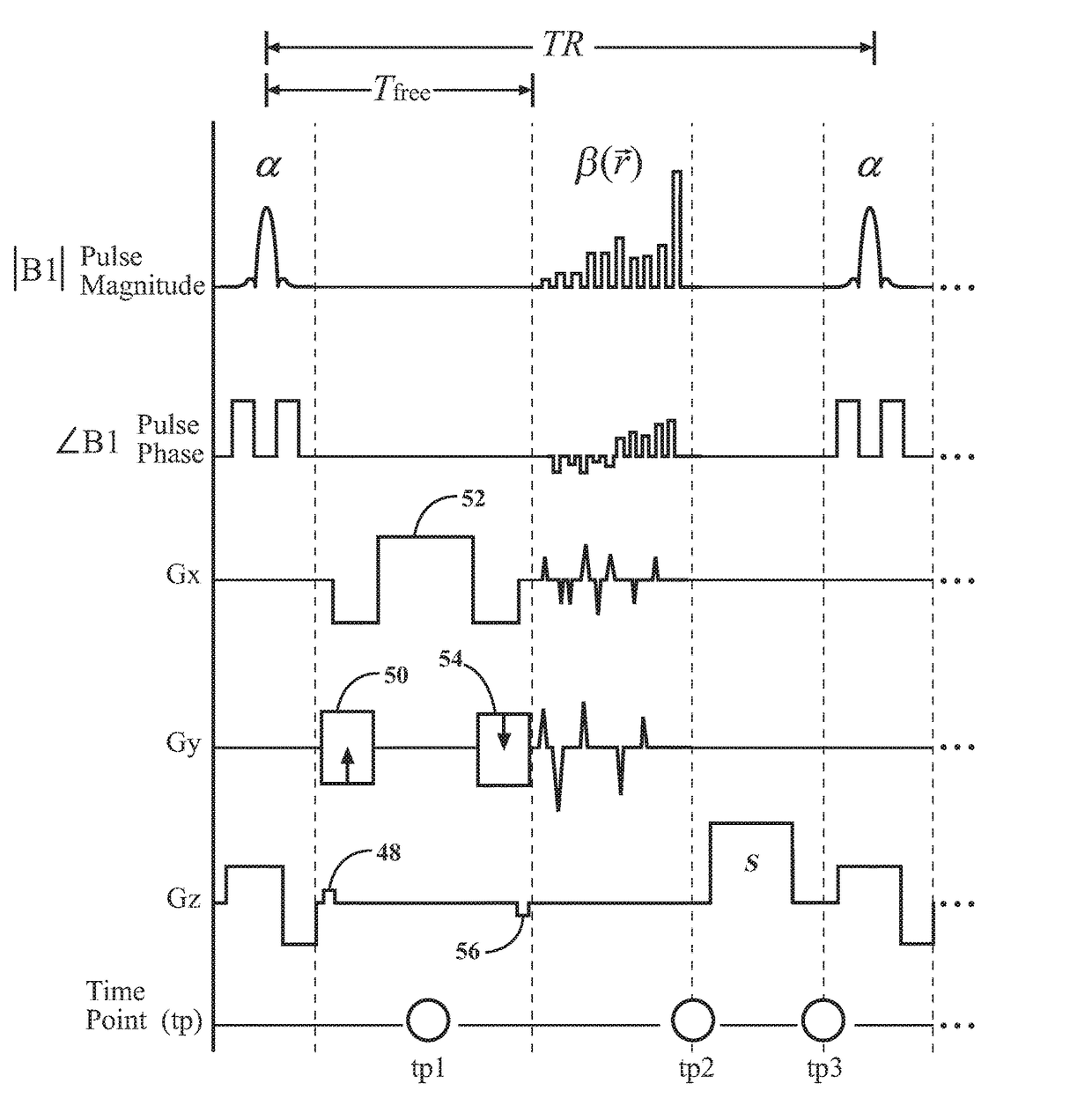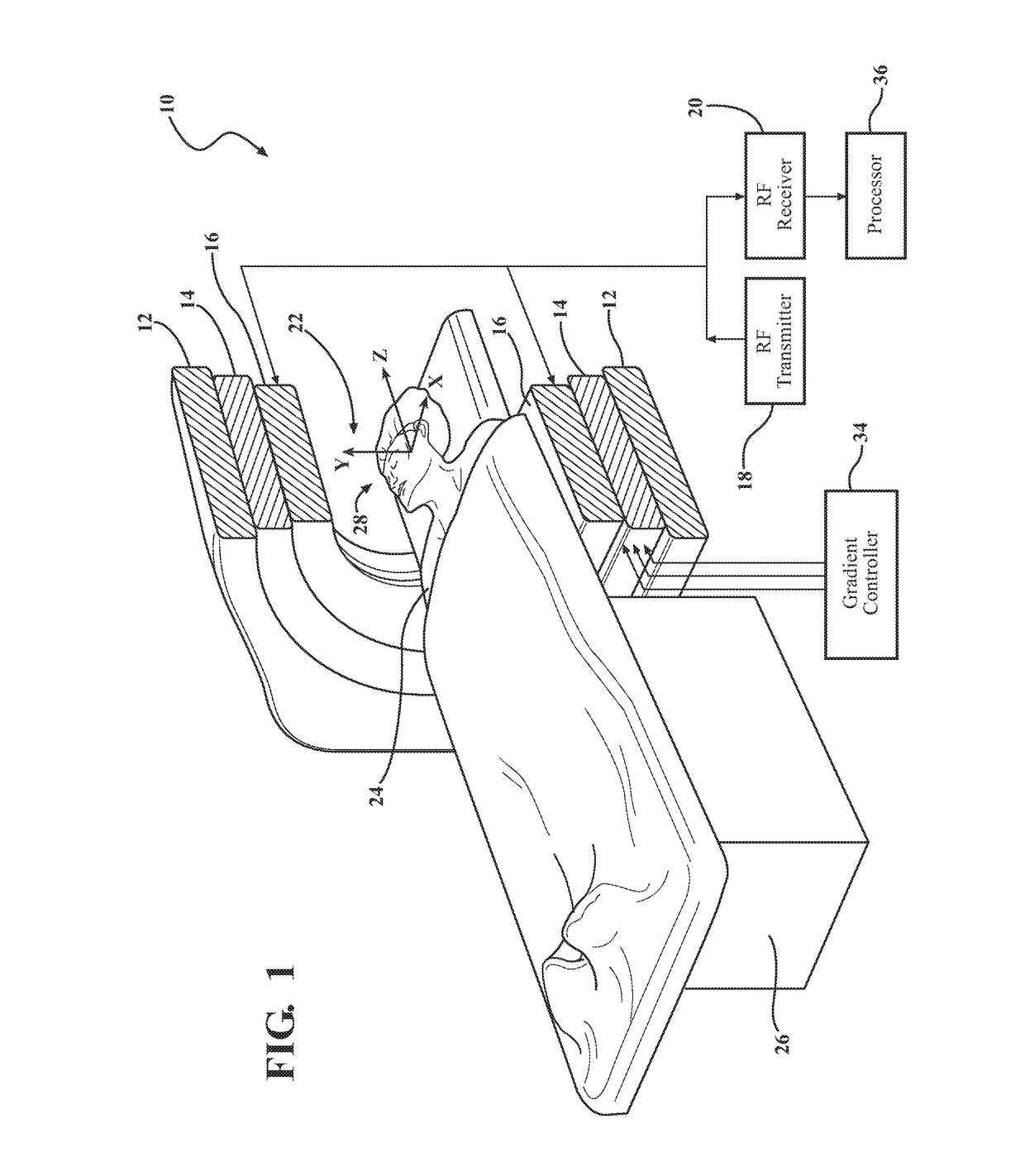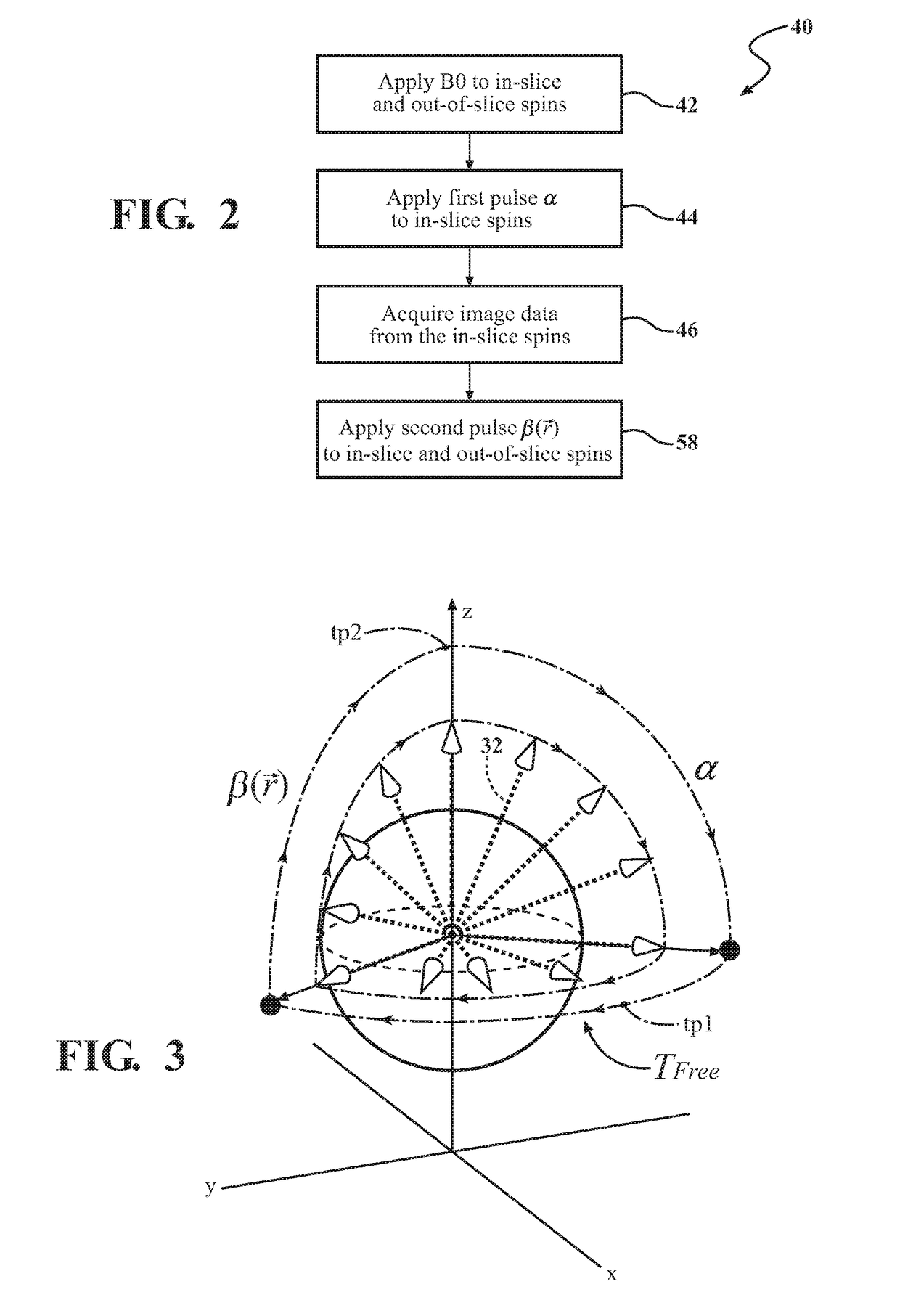Method of MRI imaging using non-slice-selective, spatially tailored tip-up pulse
ip-up pulse technology, applied in the field of acquiring image data with a magnetic resonance imaging (mri) system, can solve the problems of limiting the application of bssfp, significant loss of snr and useful image contrast, and significant loss of bssfp imaging, so as to improve snr efficiency, prevent in-slice spin precession, and improve the effect of longitudinal magnetization
- Summary
- Abstract
- Description
- Claims
- Application Information
AI Technical Summary
Benefits of technology
Problems solved by technology
Method used
Image
Examples
Embodiment Construction
[0024]Referring to the Figures, wherein like numerals indicate corresponding parts throughout the several views, an MRI system is generally shown at 10 in FIG. 1. The MRI system 10 generally includes a field magnet 12, a set of gradient coils 14, an RF coil 16, an RF transmitter 18, and an RF receiver 20. The field magnet 12 has a coaxial cylindrical configuration and defines a bore 22 therein. An object 24, typically a human body, is disposed on a support 26 which is moveable within the bore 22. The gradient coils 14 and the RF coil 16 are disposed within the bore 22 of the field magnet 12.
[0025]The MRI system 10 conventionally images a region of interest (ROI) 28 of the object 24. For simplicity, the ROI 28 is shown as a human head in FIGS. 1 and 6. The ROI 28 is imaged according to a plurality of slabs or slices 30. Only one of the plurality of slices 30 is illustrated in FIG. 6 for simplicity. Each slice 30 is generally a planar region having any suitable thickness, such as 10 m...
PUM
 Login to View More
Login to View More Abstract
Description
Claims
Application Information
 Login to View More
Login to View More - R&D
- Intellectual Property
- Life Sciences
- Materials
- Tech Scout
- Unparalleled Data Quality
- Higher Quality Content
- 60% Fewer Hallucinations
Browse by: Latest US Patents, China's latest patents, Technical Efficacy Thesaurus, Application Domain, Technology Topic, Popular Technical Reports.
© 2025 PatSnap. All rights reserved.Legal|Privacy policy|Modern Slavery Act Transparency Statement|Sitemap|About US| Contact US: help@patsnap.com



